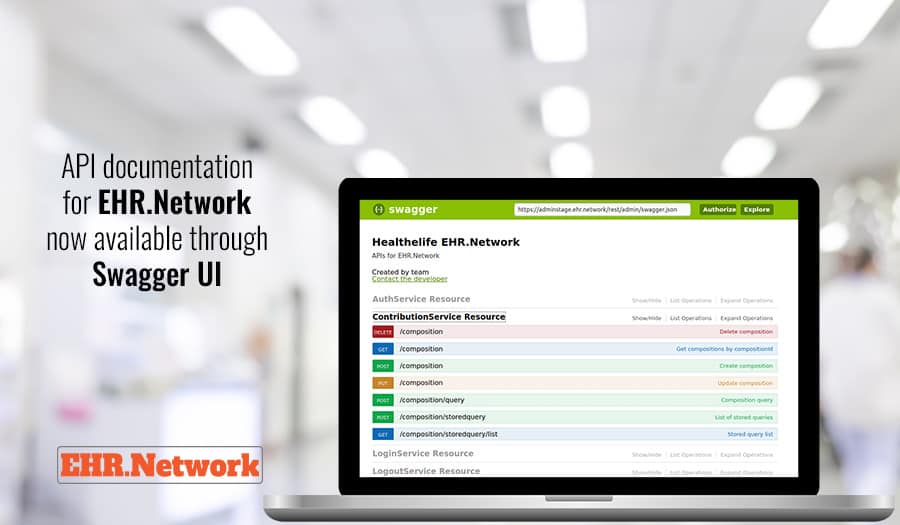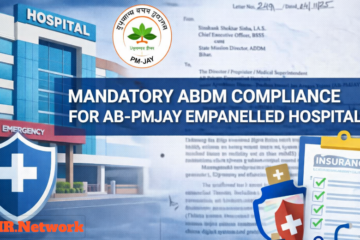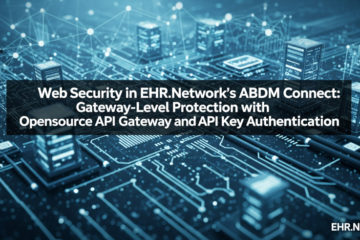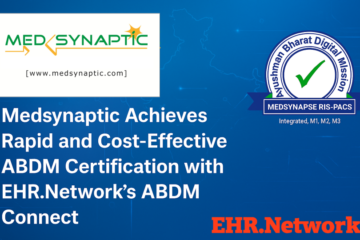API documentation for EHR.Network now available through Swagger UI

We are happy to announce the public release of our interactive RESTful API documentation for EHR.Network. This live documentation has now been made available online for application developers. It heralds another milestone in making our person-centric EHR platform – EHR.Network – simple to use for healthcare application developers.
This API documentation conforms to the OpenAPI specifications, thus making it easy for developers to understand and work with. It is freely accessible on our sandbox environment https://adminstage.ehr.network/rest/
Key features of the swagger API documentation for EHR.network
Our API documentation allows developers to interact with the back end services in real time. It is built with the developer in mind and includes the following features
- The APIs grouped into Service Resources for easy navigation
- Resource description pages for every Service Resource. These pages include a list of all supported attributes, their cardinality and accepted options. It has been designed to help you understand more about them
- You can execute each API online to understand it’s behavior before integrating it in your application code
- We have provided example JSONs to help you structure your application code and get the APIs working easily
- Every API also includes a full list of HTTP return codes and associated reasons. These are also returned properly when executed so that they can be verified
How do you authenticate yourself to get access to execute the APIs
To execute the APIs listed in the API documentation for EHR.Network, you have to first login into the sandbox with valid user credentials and generate an access token. The example JSON for the ‘Login API’ gives you details of submitting your credentials for generating the access token. This access token should be used in the Authorization Header for all subsequent API invocations.
This has been done to protect the sandbox server and limit misuse of this service. In case you are looking at testing these APIs, you may contact us on team’at’healthelife.in and request for your login credentials.
The Service Resources that the API documentation covers
EHR.Network is designed to cover the complete information management needs for any healthcare application and hence includes a large set of Service Resources. While building this API documentation for EHR.Network, we have attempted to cover all the important resources that you, as an application developer, would need to access. As the platform expands to add more services, this documentation will also expand to cover them.
The list of Service resources currently available are..
- LoginService Resource – API that enables user login to EHR.Network to generate an Access Token. The LogoutService Resource gracefully clears a User access session after the set timeout duration expires.
- RoleService/ProfessionService Resources – Enables the management of Roles and Professions in the deployment
- AuthService Resources – APIs to determine the logged in user’s Authorization credentials. Currently eleven distinct Authorization categories are supported
- OrganizationService Resource – Set of APIs for management of Organizations using the Service Provider profile. This includes managing organization hierarchy
- UserService Resource – APIs that enable the management of user profiles and their credentials. In a healthcare context a ‘User’ is typically a healthcare worker and includes administrators, doctors, nurses, pharmacists, lab technicians etc.
- OrgUserMappingService Resource – These APIs are used in mapping of users to Service Providers with roles and professions that determine their access levels in that organization
- PersonService Resource – PersonService APIs enable the creation and management of patient profiles including EHR their accounts
- OrgPersonMappingService Resource – This resource maps patients to Organizations that are providing healthcare for the patient
- ContributionService Resource – These APIs are used for the management of clinical information in the person’s EHR
- VirtualFolderService Resource – These APIs manage the logical folders that are used to group and manage the contributions that are made to a person’s EHR for visualization in the UI
- TaskManagementService Resource – The task management APIs are used to manage workflow processes between users & patients. These include appointment, referral, care services etc.
- NotesServiceResources – Set of APIs that helps exchange notes to improve care coordination between healthcare professionals treating a patient. This service enhances the workflow capabilities in an application
We are committed to develop more tools and resources to make things simple for healthcare application developers like you to leverage the power of EHR.Network. So stay tuned for more such useful information
Learn more
- Explore case studies
- Read documentation
- Write to us
- Call us on +91 63609 97311



0 Comments